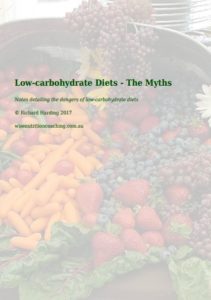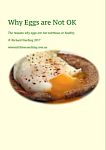The Cause of Type 2 Diabetes
Cammidge – 1923
In 1923, Dr. P.J. Cammidge wrote “that one of the commonest causes of a seeming progressive failure of carbohydrate tolerance was a conscious or unconscious increase in the fat of the diet.” 1
Sweeney Studies from 1927 and 1928
J.S. Sweeney wrote two papers in 1927 and 1928 that showed high-fat and high-protein diets increase insulin resistance. 2 3
Healthy, young medical students were divided into four dietary groups:
- high-carbohydrate diet consisting of sugar, candy, syrup, baked potatoes, bananas, and oatmeal, rice, and white bread
- high-fat diet consisting of olive oil, butter, mayonnaise, egg-yolks and cream
- high-protein diet consisting of lean meat, lean fish, and egg-whites
- the fourth group was placed on a fasting regime

The students were fed their improbable diets for two days and a glucose tolerance test (GTT) was performed on the morning of the third day. The students who consumed the high-carbohydrate showed an increase in tolerance for dextrose; those on the high-protein diet showed a mild inability to remove sugar from the blood; those on the high-fat and starvation diets showed a significant decrease in their tolerance for sugar.
After only two days on their experimental diets, the only group showing a normal, healthy response to the glucose tolerance test was the high-carbohydrate group.Type 2 diabetes results in high levels of glucose in the blood. High levels of glucose over an extended period of time places you at risk for many serious health problems. The usual medical advice is to prescribe a diet with very little sugar and limit starch in the diet since glucose is formed as a result of starch being digested. This does seem to be the logical solution to having too much glucose in the blood.
However, this exacerbates the problem. The real solution lies in a low-fat, low-protein diet.
Sir Harold Himsworth
Sir Harold Himsworth (1905–93) was a renown medical doctor and researcher. He was appointed Professor of Medicine at the University of London in 1939. He is best known for his work on diabetes although he had many other interests including the effects of radiation, tropical medicine and epidemiology. 4 5
Himsworth’s conclusions after a lifetime of diabetic experimental work, research and study was:
Type 2 Diabetes and Intramyocellular Lipids
It was not until the 1980s that it was discovered how Type 2 Diabetes is generated. If you type “intramyocellular lipids diabetes” into a Google Scholar search, you will receive hundreds of search results that documents the cause of type 2 diabetes. “Intramyocellular lipids diabetes” refers to fats inside muscle cells.
High level of fat inside muscle cells prevent insulin from transporting glucose from the blood into the muscle cells. A high-fat diet (that is a normal Western diet) changes the amount of lipids in muscle cells within 24 hours.
Download a 17 page fully referenced document that explains the causes of type 2 diabetes and how most instances of type 2 diabetes can be reversed.
If a person is taking diabetic medication or blood pressure medication, the person can end up having severe hypoglycemia or very low blood pressure that can put their health at risk.Carbohydrates DO NOT cause diabetes
Last updated on Sunday 8 September 2024 at 17:00 by administrators
Footnotes
- Cammidge, P. J. & Howard, H. A. H. (1923) New Views on Diabetes Mellitus. Henry Frowde and Hodder & Stoughton.
- Sweeney, J. S. (1927) Dietary Factors that Influence the Dextrose Tolerance Test. Archives of Internal Medicine. 40 (6), 818–830.
- Sweeney, J. S. (1928) A comparison of the effects of general diets and of standardized diets on tolerance for dextrose. Archives of Internal Medicine. 42 (6), 872–876.
- Gale, E. A. (2013) Commentary: The hedgehog and the fox: Sir Harold Himsworth (1905–93). International Journal of Epidemiology. 12 (6), 1602–1607
- Black, D. & Gray, J. (1995) Sir Harold Percival Himsworth, K. C. B., 19 May 1905 – 1 November 1993
- Himsworth, H. P. (1934) Dietetic factors influencing the glucose tolerance and the activity of insulin. The Journal of Physiology. 29–48.
- Himsworth, H. P. (1935) Diet and the incidence of diabetes mellitus. Clinical Science. 2117–148
- Himsworth, H. P. (1935) Diet and the incidence of diabetes mellitus. Clinical Science. 2 (1), 117–148.





